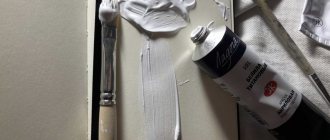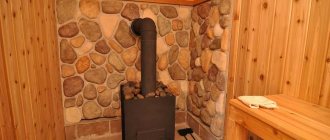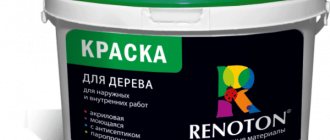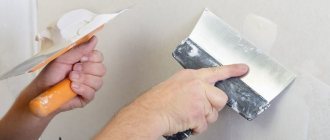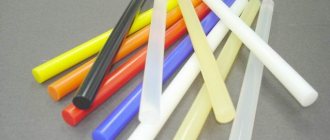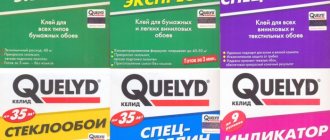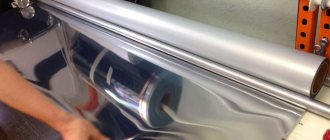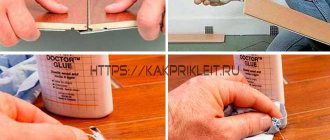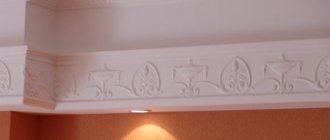Gypsum-based building materials are widely used by owners for comfortable furnishing of apartments. Gypsum fiber sheets (GVL) and plasterboard (GKL) are popular solutions that are used in construction and repair. We invite you to conduct a comparative analysis of these materials, which will allow you to understand the difference between them and determine whose set of properties - gypsum fiber board or gypsum plasterboard - is more preferable.
Drywall
GKL - plasterboard sheets - do not need unnecessary popularization. This is a material that is one of the most in demand in repair and construction work. Its structure is:
- Gypsum layer (93%).
- Cardboard layer (6%).
- Organic (1%).
To create a gypsum board, a layer of cardboard is glued onto the gypsum layer; it also contains small amounts of organic substances and humectants. The result is a durable material with a smooth surface, which is given to it by cardboard. Taken together, these properties make it possible to effectively use gypsum boards for various construction and repair needs.
Technical description of gypsum fiber
Let's look at how GVL differs from GCR. Here the basic composition of the core is approximately 80% gypsum, the rest is occupied by cellulose fibers. Recycled waste paper is used as raw material. Fiberglass mesh is used for the shell. The presence of reinforcing components in the structure of the canvas indicates how plasterboard differs from gypsum fiber. The first has comparatively lower mechanical strength.
Cellulose fiber Source kupol-market.ru
Depending on the additives used, three types of gypsum fiber sheets are distinguished. This is a standard, moisture-resistant and decorative option with a laminated surface. There is also a reinforced sample, which is distinguished by the presence of a double fiberglass shell.
Characteristic features of drywall
Drywall has the following characteristics:
- the ability to absorb moisture when there is excess and release when there is a deficiency;
- high sound insulation properties;
- decent fire resistance (characteristic only for sheets marked GKLO);
- safety from an environmental point of view;
- the ability to create curved shapes;
- moisture-resistant plasterboard (GKLV) is successfully used in wet rooms.
The cost of one square meter of plasterboard is about 150 rubles, which is 2–2.5 times less than the cost of gypsum fiber. The difference in price between these materials is one of the most significant for many.
Where to use GVL and GKL?
First you need to decide on the type of premises to be finished. If this is an industrial facility, it is better to choose gypsum fiber. GVL can withstand increased loads.
At home, you can use both gypsum fiber and drywall. Please note that drywall is much lighter than its more durable counterpart. Therefore, working with plasterboard will be much more convenient.
Walls
When covering the walls in the rooms of an apartment or house, it is quite possible to get by with ordinary plasterboard. For the bathroom it is better to use moisture-resistant plasterboard.
Ceiling
If you want to create an original ceiling shape, use plasterboard. It is much more flexible, which allows you to give free rein to your imagination. Gypsum fiber also has its advantages. It is more difficult to install, but GVL will provide better sound insulation and protect against moisture penetration (very important for the bathroom and kitchen).
Floor
Gypsum fiber is usually used to finish the floor. Its strength and resistance to damage are obviously superior to drywall.
Relevance of using gypsum boards
The material is used to create partitions, various structures, and wall cladding. GCR is easy to install, so you can implement various ideas in terms of interior design, achieve cosmetic cleanliness in your living space, and also implement original construction and finishing ideas even on your own.
USEFUL INFORMATION: Options for plasterboard ceilings in the hallway
Thanks to sheets of drywall, owners can easily:
- eliminate uneven surfaces in the apartment, hide corners or curved walls;
- make a redevelopment by installing partitions;
- create exquisite design structures in the form of arches, niches, columns;
- complement the room with built-in lighting.
Cost overview
Gypsum fiber sheet Knauf/Knauf Supersheet FC moisture resistant 2500x1200x10 mm
630.00 rub.
Product code 27
Knauf Superlist FC is a high-quality, environmentally friendly, moisture-resistant plasterboard for dry p.....
Gypsum fiber sheet Knauf/Knauf Superlist FC moisture resistant 2500x1200x12.5 mm
720.00 rub.
Product code 31
Knauf Superlist FC is a high-quality, environmentally friendly, moisture-resistant plasterboard for dry p.....
Gyproc plasterboard sheet 2500x1200x9.5 mm
250.00 rub.
Product code 76
Gyproc plasterboard sheet is ideal for the installation of suspended ceilings, as well as the implementation of any.....
Gypsum fiber sheet Knauf/Knauf Superfloor moisture resistant 1200x600x20 mm
485.00 rub.
Product code 7
Knauf Superfloor is a factory-ready product for element-by-element assembly in...
Plasterboard sheet Knauf/Knauf moisture resistant 2500x1200x12.5 mm
370.00 rub.
Product code 11
Knauf moisture-resistant is a rectangular material that consists of two layers of special.....
Plasterboard sheet Magma 2500x1200x9.5 mm
225.00 rub.
Product code 12248
Construction and finishing material for wall cladding, partitions, suspended ceilings, and so on.....
Gypsum fiber: features and scope of application
A material that, due to its properties, has managed to compete with gypsum plasterboard. Gypsum fiber is characterized by high strength and weight, and is not subject to stretching or deformation. GCR and GVL have a similar composition, but the gypsum fiber sheet, consisting of cellulose fibers and pressed gypsum, is homogeneous in structure. The surface of the gypsum plasterboard is polished and impregnated with special compounds that prevent gypsum dusting and moisture absorption.
Just like drywall, gypsum board is used for finishing walls and erecting interior partitions. The moisture-resistant type of gypsum fiber is suitable for use in wet areas such as the bathroom.
A unique feature of gypsum fiber that distinguishes it from plasterboard is the ability to use it for dry floor screed. Special sheets with a straight longitudinal edge are produced for these purposes.
GVL
Gypsum fiber products consist of gypsum (80%), fluff pulp (15%) and special technological additives (5%). In a homogeneous mass, cellulose fibers act as a reinforcing mesh, providing high strength to the finished sheet; in addition, due to the presence of cellulose in the composition and the formation of the product under pressure, the level of viscosity increases.
Manufacturers produce 4 types of products:
- GVL standard for use in rooms with standard conditions.
- GVLV is a moisture-resistant option. For areas with high humidity.
- GVLO is a fire-resistant option. Suitable for finishing wooden buildings.
- GVLVO is a mixed product with additional protection from moisture and fire-resistant properties. Suitable for structures with sudden changes in temperature and humidity conditions.
Finished products differ only in markings. Sheets can also be marked with the letters “Ш” - sanded, or “NSH” - unsanded.
The sheets can vary in size as follows: thickness from 10 to 20 mm; width from 500 to 1200 mm; length from 1500 to 3000 mm.
Used for subsequent finishing with wallpaper, paint, decorative plaster or ceramic tiles.
Advantages of the material:
- the increased strength of the material allows a simple self-tapping screw screwed into the sheet to hold at least 30 kg of weight;
- due to their strength, the sheets can be used as a base for finishing the floor;
- the viscosity of the composition prevents the formation of a large amount of dust when cutting the material. In addition, fasteners are easy to fix without dowels;
- high degree of thermal protection;
- works as a sound insulator - provides a noise reduction of 40 dB;
- not flammable When exposed to direct fire, it only chars, suitable for cladding wooden structures;
- not afraid of exposure to high humidity;
- suitable for cladding walls of unheated buildings (due to increased frost resistance);
- able to absorb moisture and regulate the level of humidity in the room;
- contains no allergens or other harmful substances. Completely safe;
- does not change dimensions when humidity or temperature changes.
Flaws:
- high price;
- the heavy weight of the sheet is difficult for one master to cope with installation;
- does not have plasticity - does not bend.
Distinctive properties
The material is characterized by a number of features:
- environmental safety, contains no formaldehyde and resins;
- moisture resistance (refers to GVLV) and increased fire resistance;
- excellent heat and sound insulation properties;
- frost resistance;
- high density.
One square meter of gypsum fiber sheet costs 300–400 rubles.
Briefly about the main thing
Drywall consists of a gypsum core and a shell of pressed paper.
GCR classification is carried out on the basis of the additives or impregnations used.
GVL is a building material made of gypsum with inclusions of cellulose fibers and a shell of fiberglass mesh.
Drywall is superior to GVL in lightness, low cost and a wider range.
Gypsum fiber sheet is better than gypsum board due to its versatility, non-flammability, and relatively high strength.
GCR is acceptable for installing a dry floor screed.
It is easier to build ceiling and complex structures from plasterboard.
Ratings 0
Strength
Which is better, gypsum plasterboard or gypsum plasterboard, if you look at the strength of materials? Gypsum fiber is preferable for rooms with higher requirements regarding impact protection. How important this is in relation to apartments is up to the owners to decide.
Drywall is easier to break through, its cardboard shell can be damaged, and it can “go limp” from moisture. Gypsum fiber is much stronger, you can hammer nails into it, it will not crumble.
USEFUL INFORMATION: Sheathing walls with plasterboard without frame and profile (video)
Comparison results - which is better to choose?
Gypsum fiber panels differ from plasterboard in increased strength, durability, sound and heat insulation properties, as well as fire resistance. Therefore, it is the most preferred material for cladding walls and ceilings , subject to the availability of the necessary technical conditions. However, it will not allow the formation of surfaces of complex shapes.
Drywall is recommended for use when the budget for work is limited , in order to create structures with complex geometry, as well as when the load-bearing capacity of walls, ceilings or the entire facility is insufficient.
Ease of operation
It is easier to work with homogeneous gypsum fiber sheets in terms of ease of cutting: the material does not crumble, so it can be cut even into very small pieces. However, due to its large mass, the sheet should not be mounted on the wall alone: it can break under its own weight.
Drywall is less durable, so they usually cut it crosswise or try to use whole sheets. But it weighs less, which is important for convenient work. A distinctive feature of gypsum board is also its ability to become plastic when soaked and restore normal strength after drying.
What is the main difference
Let us list the main differences between the two materials:
- plasterboard is made of three layers, and gypsum fiber is a solid product;
- GVL has exceptional strength and is allowed for finishing when it is important for the surface to withstand powerful static loads;
- magnesium oxide and chloride are added to the composition of gypsum plasterboard; only gypsum is used in gypsum plaster;
- GCR has more restrictions for use;
- when cutting drywall with an angle grinder, a large amount of dust is generated, and gypsum fiber is cut with virtually no fine fractions;
- a gypsum board sheet cut with a construction knife is broken downwards, and gypsum board sheets are broken upwards;
- the large mass of gypsum fiber sheets does not allow the master to work alone;
- when finishing drywall with wallpaper, puttying of the surface is required; the same operation on gypsum plasterboard does not require additional preparation, except for masking the fasteners;
- GVL is difficult to bend, so only gypsum plasterboard is used for arched surfaces;
- To install gypsum fiber boards, a more powerful frame is prepared than for gypsum plasterboards, made of wooden bars or a metal profile with a wall thickness of 0.5 mm.
Moisture resistance
Both gypsum plasterboard and plasterboard can be moisture resistant, but experienced craftsmen say that it is undesirable to use plasterboard in the bathroom even in this version. Gypsum fiber tolerates wet conditions better, however, it must also be protected from direct contact with water with a primer and finish.
It is impossible to give an unambiguous answer to the question of what to choose – gypsum fiber board or plasterboard sheets for walls. One can only note, based on the properties of each of them, that in order to create decorative elements or light structures, it is preferable to use gypsum boards. This is a good choice, because this material is lightweight and affordable, and it can be bent. GVL is appropriate to use in damp rooms; it is also suitable for creating reliable and strong walls, but the price of gypsum fiber is higher.
Comparison of GVL and GKL by properties:
- Gypsum fiber is denser and stronger than drywall. For example, in gypsum plasterboard you can drive nails and screw in screws without dowels, which cannot be said about gypsum plasterboard. GVL can withstand increased loads.
- Drywall is better than gypsum fiber in terms of flexibility. With its help, you can make shaped structures - arches, original ceilings and other finishing elements that require bending of the material. It is not possible to do the same with gypsum fiber.
- Drywall can be cut with a knife, but gypsum fiber will have to be sawn.
- To process drywall corners, you need metal corners and reinforcing tape. But gypsum fiber does not require such treatment.
- Drywall cannot be coated with silicon-based paint and whitewash, but gypsum fiber allows this.
- Gypsum fiber is better than drywall in terms of heat resistance, although both materials are fire resistant.
- Drywall is much lighter than gypsum fiber. A gypsum board sheet 2500x1200 mm weighs about 40 kg, but the thickest gypsum board weighs 33 kg.
Advantages and disadvantages
The choice is always easier if you know the strengths and weaknesses of competing materials. This allows you to avoid unpleasant surprises, both during operation and during operation.
GKL
Many years of experience in using gypsum board have formed a complete list of the advantages of the material, where nothing is superfluous, nothing is missing:
- affordable price for mass buyers. This plus is one of the most important for families on a limited budget. At the same time, the quality of work and durability do not suffer;
- low thermal conductivity coefficient - 0.30-0.34 W/ (m×K). According to this indicator, the material is comparable to wood. In combination with insulation, an excellent thermal insulation layer is obtained;
- Easy to install: no experience required. The main thing is to know the principles of working with the material, which can be easily found on the World Wide Web;
- flexibility. Many will be surprised. After all, the material easily crumbles upon impacts or strong bends. On the one hand, this is true. On the other hand, with the help of gypsum plasterboard you can make any semicircular arches and complex installations (as evidenced by the photo below);
Methods for bending gypsum boards.
- fire resistance. The gypsum itself does not burn, but only melts at +1450°C. Only cardboard can burn. But after it is treated with fire retardants, it becomes difficult to burn (painted pink);
- moisture resistance. In fact, gypsum absorbs moisture very well. However, processing sheets with special compounds makes it possible to use the material in rooms with high humidity (kitchen, bathroom);
- high level of maintainability - dents, cracks, and through holes can be easily repaired. As a last resort, the damaged area is replaced;
- versatility. Can be mounted in any room (residential, non-residential) under any finish (wallpaper, paint, ceramic tiles);
- environmental cleanliness. The material contains no additives harmful to health;
- the ability to easily and simply hide communications. But the main thing here is not to overdo it and arrange inspection hatches at the points of connections or adjustments.
The list of advantages of drywall is impressive, but the disadvantages :
- fragility is the main problem of gypsum boards. Sheets may crack during handling (carry only vertically), transportation, or installation. Therefore, special care is needed when working with slabs;
- low strength under weight loads - you can’t hang anything heavy on gypsum plasterboard partitions. It is necessary to provide embedded OSB or plywood boards at the fastening points in advance. You can also use molly dowels. But their weight is limited - for a slab with a thickness of 12.5 mm, such a mount can withstand from 16 to 25 kg of load. This way you can hang a cornice and a TV, but there are no kitchen cabinets or shelves;
- low level of sound insulation, which is important for partitions - even a whisper is perfectly audible. Exit in mineral wool insulation (not polystyrene foam) between sheets of plasterboard.
Another drawback, although common to the materials being compared, is the reduction in space. This is especially noticeable in small rooms or apartments (houses) with low ceilings.
Important: some experts consider the impossibility of covering walls in dachas with gypsum sheets to be a disadvantage—in winter, due to the lack of heating, it will tear. It's hard to agree with this. Firstly, gypsum board is afraid not of frost, but of high humidity (frost tears away sheets that have accumulated moisture). Secondly, you can use moisture-resistant modifications of drywall (GKLV). Thirdly, indoor humidity is lower in winter than in summer. Therefore, after a wet autumn, you can dry the room well and close it for the winter.
GVL
GVL also has its advantages
- high strength allows you to hang heavy objects on vertical structures (a simple self-tapping screw holds up to 30 kg of load), and on the floor to use it as a base under linoleum, parquet, laminate or tiles;
- the presence of viscosity, firstly, allows you to cut the material without dust - it does not crumble, and secondly, you can tighten the fasteners without dowels - it will hold like in wood;
- low heat transfer coefficient, which allows the material to be used as insulation;
- good level of sound insulation - perfectly absorbs air and shock sound waves. This is confirmed by measurements: the noise level drops by 35-40 dB;
- fire resistance - does not burn, but only chars. Therefore it is used as protection for wooden structures;
- the moisture resistance of sheets treated with special compounds (GVLV) is the same as that of cement-sand mortar;
- high frost resistance makes it possible to use it in the country and in unheated rooms;
- hygroscopicity allows, like wood, to regulate the humidity in the room. When the amount of vaporous moisture increases, it is absorbed by the GVL, and when it decreases, it is easily released;
- can be used in a “warm floor” system, but only from below;
- the material is safe in all respects - when heated, it does not emit harmful substances and does not contain allergens;
- there are no restrictions on use: private houses, apartments, cottages, unheated rooms, horizontal and vertical surfaces;
- easy to install - the work can be performed by a home craftsman without the help of specialists;
- not subject to deformation (change in linear dimensions) under the influence of temperature and humidity fluctuations.
There are also disadvantages that you need to pay attention to:
- the price is prohibitive for some segments of the population;
- high specific gravity, as a result of which an assistant is needed during installation. Even though they are smaller in size than drywall, the sheets are much heavier;
- moisture-resistant gypsum fiber sheets can be affected by rot in places with constant high humidity;
- does not bend - can only be used on flat surfaces.
Comparative analysis
To answer the question of what is better: moisture-resistant plasterboard for a bathroom or gypsum fiber, let’s summarize all the pros and cons in one table.
There is another distinctive point regarding processing. You can cut drywall with a knife.
It is better to cut gypsum fiber for the bathroom with a jigsaw, or, in extreme cases, with a hacksaw or grinder.
It is also not easy to make shaped products from gypsum fiber. It is impossible to bend it, so they cut it into sections along which the sheets are bent. But it will not be possible to bend the slab with a small radius even with trimming.
It turns out that the best option for a bathroom is gypsum fiber sheets. The material is beneficial in terms of long-term use, but unprofitable in terms of price. The service life of drywall is extended if the bathroom is properly maintained, including ventilation, which is the focus.
In addition, gypsum board sheets are covered with a moisture-resistant finish. More often, tiles are laid on moisture-resistant drywall in the bathroom as ideal protection even from water. Additionally, you must use moisture-resistant grout between the tiles. This will provide high protection against penetration of not only condensation into the sheets, but also water in the event of leaks.
The only disadvantage of finishing with tiles, wallpaper or other similar materials that are laid on an adhesive composition is the impossibility of carrying out repairs. When dismantling them, the master will definitely remove the cardboard layer, which cannot be restored. Therefore, in the process of renovating a bathroom, the entire facing layer of the wall is removed along with moisture-resistant drywall.
This will not happen if the tiles in the bathroom are laid on gypsum fiber. It is stronger, denser, and has no cardboard. The process of finishing GVL and GKLV tiles is no different from classical technology.
If you decide to cover the bathroom with gypsum fiber, then it is better to choose an unsanded option, which has a rough surface. That is, the sheet has high adhesion (bonding with other materials). In order not to make a mistake with your choice, you need to look for slabs that have two letters in their markings - NSH, that is, unpolished.
Installation subtleties
Unlike drywall, such slabs are much heavier and will certainly require an assistant to install them on the frame. You can also cope with such work alone, but you need to have a special device in the form of a frame that lifts a heavy part to the ceiling or several telescopic stands that perform the same function.
When attaching parts, you must step back from the edge at least one centimeter. This will prevent the edge of the attached fragment from splitting when screwing in the screw. It is better to cut the fragments not with a stationery knife, as is the case with plasterboard, but with a special circular saw or jigsaw. The high density and uniformity of the panels will not allow the panels to be evenly cut into fragments in the usual way.
During installation, the edges of adjacent fragments of the coating must be coated with a special glue, which will allow you to assemble a continuous surface without cracks or rough joints. After complete assembly of the surface, all joints between coating fragments must be puttied using reinforcing tape. Like gypsum sheet, a gypsum fiber piece will require chamfering where the sheets have been cut. The chamfer is removed with a special plane until a recess is obtained in the places where the two parts adjoin each other.
Subsequently, this small recess will allow you to apply a layer of putty to mask the joint. To make the installation process more clear, several photos below show how gypsum plasterboard ceilings are assembled - the process is very similar to installing a conventional plasterboard composition.
Frame
Surface filing
Sealing seams and joints
Putty the entire plane
Finishing
Flaws
This design also has some disadvantages compared to the traditionally used gypsum board. There are not too many of them, but some existing nuances may influence the choice of one or another finishing option.
- Gypsum fiber is more difficult to process. Higher density and strength will do their job here - the panels are more difficult to cut and giving them a curved shape is much more difficult.
- The weight of the structure will be greater than that of the same plasterboard surface with equal coating thickness.
- It is much more difficult to bend a sheet of gypsum fiber than a regular gypsum part, and the “wet” method, successfully used with gypsum board, will be ineffective here.
- The cost of designing from gypsum plasterboard will be higher than that of a structure of a similar shape assembled using conventional gypsum sheets
If all of the listed disadvantages are not too significant for you, then this type of finishing will be more preferable due to its improved performance characteristics.
Comparison of characteristics
Having only the strengths and weaknesses of materials at hand, it is impossible to make a clear choice. We need a comparative analysis of the main indicators. Experts include the following selection criteria:
- price;
- density;
- strength;
- ease of installation;
- thermal insulation properties;
- sound insulation level;
- flexibility;
- environmental friendliness;
- sheet weight.
Price. The most important factor when choosing any building material is its cost. Here, drywall has an undoubted advantage. Its sheets are approximately 2-5 times cheaper than its competitor. So, 1 m2 of gypsum board (standard options are compared) can be bought from 70 rubles. and higher. And for a sheet of gypsum fiber of the same area you will have to pay from 180 to 360 rubles. per m2 (depending on the type of edge and surface of the material: polished or not).
The truth needs to be clarified: moisture- and fire-resistant options are close in cost to the standard gypsum plasterboard version, and in some cases gypsum plasterboard is even more expensive. But we emphasize this again when compared with simple, without additives, gypsum fiber boards. For improved gypsum fiber board options you will have to pay around 750-910 rubles/m2.
Conclusion: GVL is purchased either with unlimited funds for repair work, or if necessary, for example, for lifting or leveling the base of the floor, where gypsum board is not used.
Density. The density indicator affects the weight of the sheet and the ability to hold fasteners: nails, screws, self-tapping dowels. It is difficult to give unambiguous assessments based on this criterion. After all, the greater specific gravity of gypsum plasterboard (see Table 1) is an undeniable plus when leveling walls in the kitchen: you can hang kitchen cabinet drawers on self-tapping screws without any problems. In other rooms there is a minus: it is difficult to work. It is difficult to cut and lift - you need a helper.
Conclusion: using the given criterion, it is impossible to unambiguously determine what is better for walls - gypsum plasterboard or gypsum fiber board. It is necessary to evaluate the material in specific relation to the place where the work is performed. The same situation occurs on the ceiling. But for the floor, the high density of gypsum fiber boards is an undeniable advantage.
Strength. A layer of gypsum of the same thickness in gypsum plasterboard is fragile, breaks easily, does not withstand dynamic (shock) loads - holes appear. It is reinforced only by a cardboard shell.
GVL penetrated with cellulose fibers can withstand high static and dynamic loads. The difference is clearly manifested in the sealing of corners: gypsum board requires plaster corners, but gypsum board does not, and when leveling the floor - gypsum board is one of the best options, and gypsum board is not considered at all for such work.
The ability of gypsum fiber to withstand heavy loads has found application in industrial construction, where the walls of workshops are finished with this material.
Conclusion: according to the criterion: which is stronger, gypsum boards reinforced with cellulose fibers have absolute superiority.
Ease of installation. Practice has shown that when choosing a type of dry plaster, the consumer first of all evaluates the cost of the material and, oddly enough, its manufacturability. According to this indicator, at first glance, drywall is beyond competition. His:
- easier to cut;
- easier to carry;
- It’s more convenient to attach to the sheathing: firstly, special screws are not needed, and secondly, the hardware is screwed in without much effort.
However, there is another side to the problem. When using gypsum fiber:
- the surface does not need to be puttied before wallpapering;
- when passing internal and external corners, painting corners are not required;
- before painting, unsanded sheets are puttied - sanded sheets are only primed;
- When sealing joints, reinforcing tape is not needed, therefore, sheets with straight edges can be used. Falset edges are needed when leveling the floor.
Conclusion: in terms of manufacturability, the materials are approximately equal.
Thermal insulation properties. Both materials consist of gypsum. Therefore, the heat conductivity indicators are approximately the same: the coefficient value is slightly higher for GVL due to its higher density, but in practice this is not noticeable.
Conclusion: both materials are good insulators. That is why experienced specialists do not recommend laying gypsum fiber boards on top of a “warm floor”.
Soundproofing. Due to different densities and compositions of components, the compared materials have different noise insulation performance. So, when installing partitions from gypsum plasterboard, it is imperative to lay mineral wool between the walls. Otherwise, almost any noise from the adjacent room will be heard. And gypsum fiber board will perfectly dampen sound waves even without a soundproofing layer.
Conclusion: GVL has an advantage in terms of noise insulation characteristics.
Flexibility. A wet plasterboard sheet becomes flexible. Using a certain technology, it can be used to form semicircular arches, curved two-tier ceilings, and other shaped structures for finishing walls and ceilings.
Gypsum fiber board has a high level of rigidity. It is impossible to bend it without breaking it, and it is impossible to get it wet - the structure of the material does not allow obtaining a plastic mass in a wet state. Therefore, GVL is used for flat surfaces.
Conclusion: gypsum board has flexibility, but gypsum board completely lacks it.
Ecological cleanliness. The materials are absolutely equal in terms of environmental friendliness: both do not contain harmful substances or allergens.
Weight. The heavier weight of GVL makes the work of home craftsmen more difficult - an assistant is needed. If it is not there, then there is a high risk of breaking the sheet during installation. Some experts find a solution by cutting the gypsum fiber board in half, which, in the opinion of the site’s editors, is not a rational solution - the technological process becomes much more complicated.
Conclusion: when finishing the premises, it is necessary to take into account the forces with which the repairs will be carried out. If alone, then many difficulties are expected with GVL.
General conclusion: if we consider the results of the comparison based on the overall assessment, then gypsum fiber boards have an advantage. However, two main criteria: price and complexity of the technology, despite the fact that drywall requires many additional operations: sealing seams, puttying, priming, gypsum board wins. Therefore, from a practical point of view, GVL can be used if there are high incomes. It makes no sense for people with average incomes to overpay where a simple gypsum board will perfectly perform its functions.

